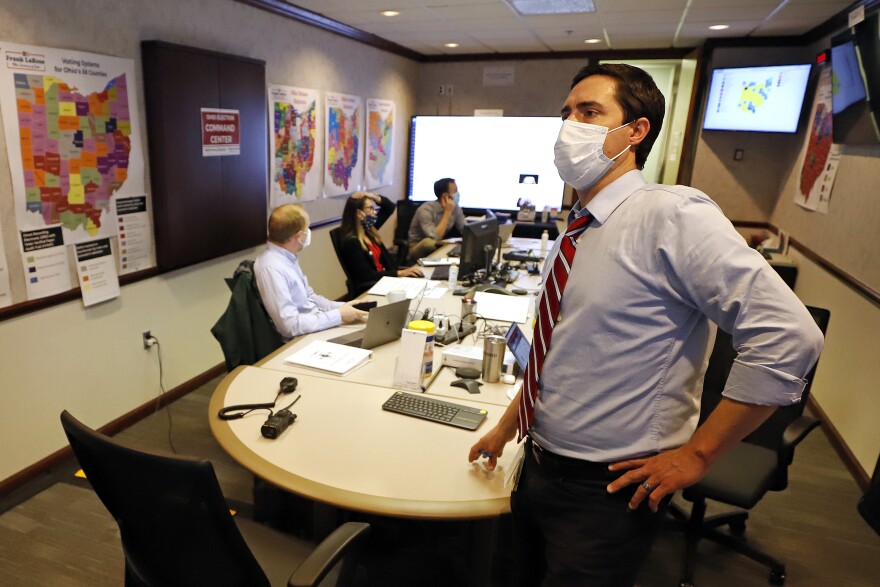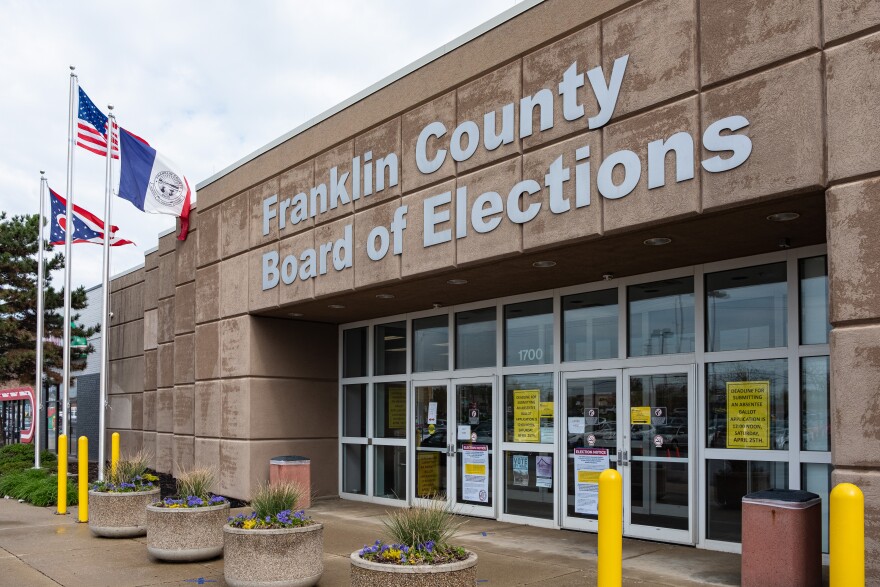In four months, Ohio voters will cast their ballots. Election officials are trying to make sure everyone who wants to vote can, while keeping everyone safe from the pandemic that's currently surging around the country.
Despite concerns about a possible lack of poll workers and the need for social distancing, Franklin County elections officials plan to open nearly as many polling places on Election Day as they usually do.
The thing about elections, says Ed Leonard, is it’s actually three elections all happening at once.
Leonard heads up the Franklin County Board, and he explains there’s voting by mail, early in-person voting and Election Day at your local polling station.
“And all those three activities are all going on at the same time, and in this environment particularly, it’s hard to project which of the three options people are going to use," Leonard says.
COVID-19 has wreaked havoc on some primary elections, leading to massive lines in Wisconsin and Kentucky. In other states, like Delaware and New Jersey, elections have gone smoothly, after leaders encouraged absentee voting with a smaller number of in-person polling places.
Leonard says the plan in Franklin County is to retrain poll workers and load up on protective equipment and cleaning supplies, but run the election as close to normal as possible.
“Right now, what we’re doing is assessing particularly some of our smaller locations to determine whether we need to make adjustments,” Leonard explains. “Either moving location or—but again, our goal is not to move locations because we know moving locations creates confusion.”

In past elections, Franklin County has operated about 350 polling locations, but Leonard expects something like 330 to be up and running on Election Day. The reduction comes from removing polling locations at nursing home facilities, following an order from Secretary of State Frank LaRose. Officials are still reviewing the list but expect to have preliminary commitments from locations by the end of the month.
One thing is for sure, though: Columbus won’t see what happened in Louisville, Ky., where the city made thousands of primary voters come to just one polling location. Leonard says Ohio state law would not allow such extreme consolidation.
Leonard is confident about securing sites, and about cleaning and social distancing on Election Day. However, he says getting 300-plus polling locations up and running means recruiting an army of poll workers.
“If there was ever a time when our citizens need to step up and serve as poll workers, that time is now,” Leonard says.
Franklin County seeks as many 5,000 poll workers for Election Day, plus another large pool of alternates in case workers can’t make it.
Another part of the plan for a smooth November is an emphasis on absentee or early voting. Using federal funding, LaRose will be sending absentee ballot requests to all registered voters, and allowing county board of elections to fix potential errors over the phone.
Leonard calls your kitchen table the safest polling location you can find.
But Jen Miller, who leads the Ohio League of Women Voters, says getting voters on board with that might be an uphill climb after this spring. Ohio’s in-person primary was postponed hours before the election in March, and shifted to almost entirely vote-by-mail.
“Honestly, this is the thing I don’t think boards of elections or the Secretary of State understands,” she says, “is how much of a black eye voting absentee got in this primary.”

She puts the onus on state lawmakers for not simplifying the process during the primary. Because multiple steps rely on a trip through the mail, voting absentee takes a lot longer than voters might realize. That’s why Miller encourages people to get started as early as possible.
“It’s almost like we’re trying to flatten our own curve here, right?” she says. “Like we’re trying to elongate participation. If you want to vote absentee, we want you to request that as soon as possible and mail that in as soon as possible. If you’re going to vote early, we encourage you to go on the early end of early voting.”
Miller argues more improvements are needed, like setting up multiple secure drop boxes so voters can more easily turn in their ballots. LaRose, on the other hand, favors the state paying for postage.
“With that, if postage is paid, and you don’t have to find a stamp or whatever else, then every blue U.S. Postal Service box in town becomes a secure drop box, where you can drop your ballot,” LaRose says.
But that move would require lawmakers’ approval - and so far they haven't done so.
Adding precautions to maintain distance and hygiene at polling locations will be expensive. Franklin County received about $1 million dollars in federal funding to help cover costs, but Leonard says that’s a fraction of what’s needed.
State and local officials are lobbying Congress for additional funds.







